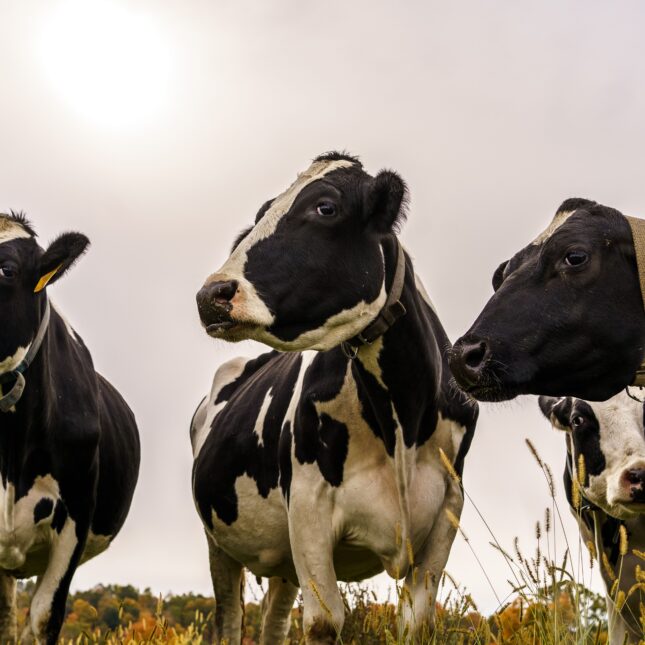
Bird flu snapshot: This is the latest installment in a series of regular updates on the H5N1 flu outbreak in dairy cows that STAT is publishing on Monday mornings. To read future updates, you can also subscribe to STAT’s Morning Rounds newsletter.
A network of nascent vaccine manufacturers in low- and middle-income countries will soon start preliminary work to develop messenger RNA vaccines targeting the H5N1 bird flu virus, an effort that could speed production during a pandemic, should this virus trigger one.
The World Health Organization announced Monday that Argentina’s Sinergium Biotech will begin doing pre-clinical testing of candidate vaccine viruses for H5N1 using mRNA technology. The company, which is doing the work at the behest of the Argentinian government, is part of a network of emerging manufacturers that have been working with the WHO and the Medicines Patent Pool to expand mRNA production capacity around the globe.
The announcement comes following a week in which the human count of H5N1 cases associated with the ongoing outbreak in cows in the United States hit 13 and the cumulative number of herds that have tested positive for the virus climbed to 172 in 13 states. That number is widely believed to be an underestimate of the true scale of the outbreak in dairy cattle.
All of the human cases appear to stem from infected livestock, not person-to-person spread. Ten of the human cases have been detected in Colorado, which currently tops the list of states with infected herds. The other three were diagnosed previously in Michigan (two) and Texas (one).
Four of the human cases are in farmworkers who contracted the virus while working in dairies. The remaining nine are in workers who were culling large poultry operations in Colorado. Genetic analysis of the viruses in the infected poultry operations showed that it belongs to the same strain that is spreading in cows. High temperatures in the poultry barns reportedly rendered personal protective equipment ineffective. All human cases in this outbreak have involved mild illness.
The Centers for Disease Control and Prevention said although the number of human cases have climbed, its assessment of the risk the current situation poses has not changed. The CDC suggests that at present the risk to the general public is low.
“There are no signs of unexpected increases in flu activity otherwise in Colorado, or in other states affected by H5 bird flu outbreaks in cows and poultry,” it said in a statement released late last week. “To date, we have not seen genetic changes in the virus that would make it more likely to transmit between humans, but we are closely monitoring it.”
The world is watching the outbreak in the U.S. and there have been reports of discussions among countries and vaccine manufacturers about production of pandemic flu vaccine, should it be needed.
The goal of the mRNA vaccine manufacturing network — and this work led by Argentina — is an effort to try to prevent low- and middle-income countries from finding themselves without access to vaccines when the next pandemic occurs, WHO officials said.
Affluent countries bought their way to the front of vaccine delivery queues during the 2009 H1N1 influenza pandemic and again in 2020-2021, when vaccines for Covid-19, the first to use mRNA technology, became available.
“We saw during Covid that those regions that don’t have vaccine manufacturing, they are the last in line to receive it,” Martin Friede, team lead for the WHO’s vaccines research unit, told reporters on Friday.
Sinergium will share its findings with others manufacturers in the 15-member network, Friede said. “So the other partners don’t need to make the significant intellectual and financial investments in developing their own H5N1 candidates.” Countries in the network include Vietnam, Bangladesh, Nigeria, Ukraine, and Egypt.
After the 2009 pandemic, the WHO, with funding from the U.S. and other governments, worked with developing countries to create capacity to produce flu vaccines in markets with no domestic capacity. But most of those facilities were eventually shuttered, Friede said, because those markets don’t use significant amounts of seasonal flu vaccine.
The hope this time is that mRNA is a more nimble technology which can be used to produce vaccines and therapeutics that developing countries actually need regularly, which will keep facilities running so they’re ready to turn to pandemic vaccines then they are needed, he said.
As one example, South Asian members of the network may produce vaccines to protect against enterovirus 71, which causes hand, foot, and mouth disease, a common ailment in that part of the world, he said. The facility in South Africa is pursuing production of tuberculosis vaccines.
“We’ve done this before. This time we’re doing it right,” Friede said.
If a pandemic — caused by H5N1 or another virus — were to begin in the near term, this work would not prevent another global shortage of vaccine, he stressed.
“But if it was to start next year, already the work that’s been done this year would mean that … all of the partners would be in a better position.” He noted that some members of the network have not yet begun to build mRNA manufacturing infrastructure.
“But we have about half that have got some [good manufacturing processes] manufacturing capacity and have begun installing necessary equipment so that if a pandemic was to happen, they would be better able to roll out,” Friede said.
To submit a correction request, please visit our Contact Us page.










STAT encourages you to share your voice. We welcome your commentary, criticism, and expertise on our subscriber-only platform, STAT+ Connect